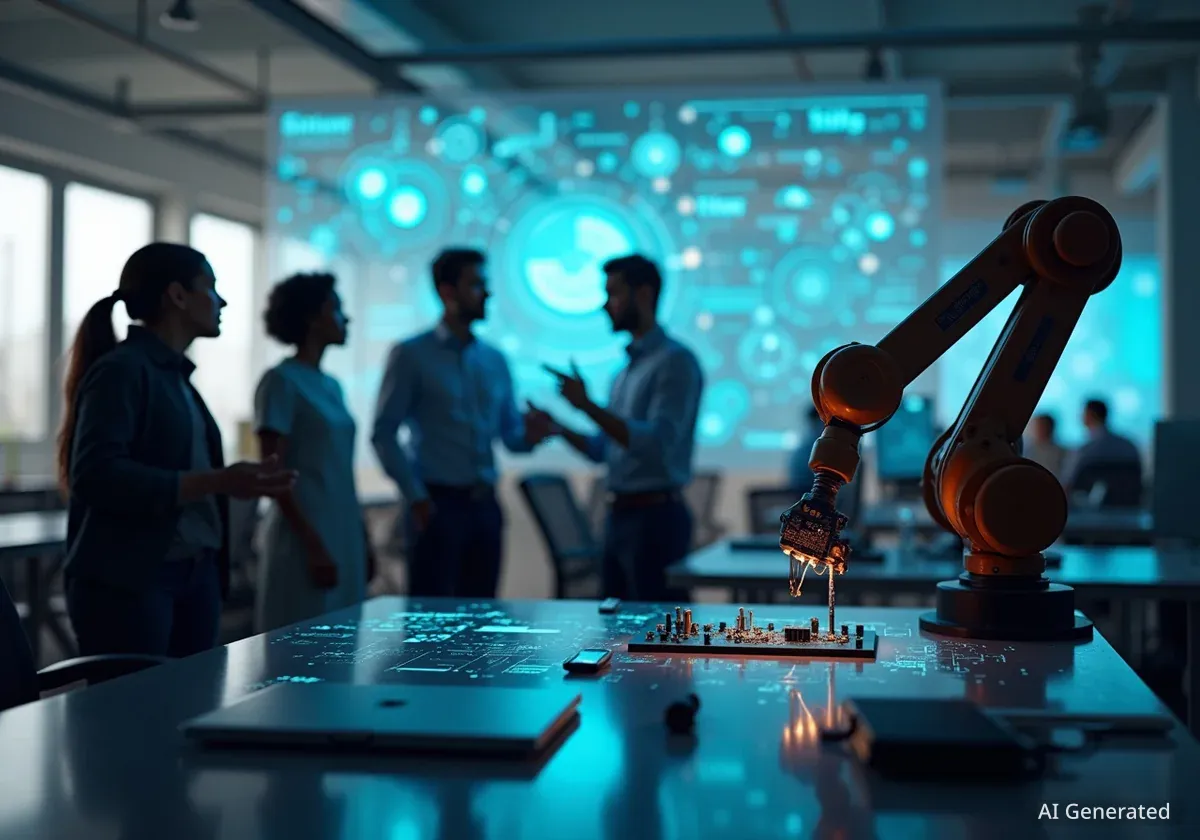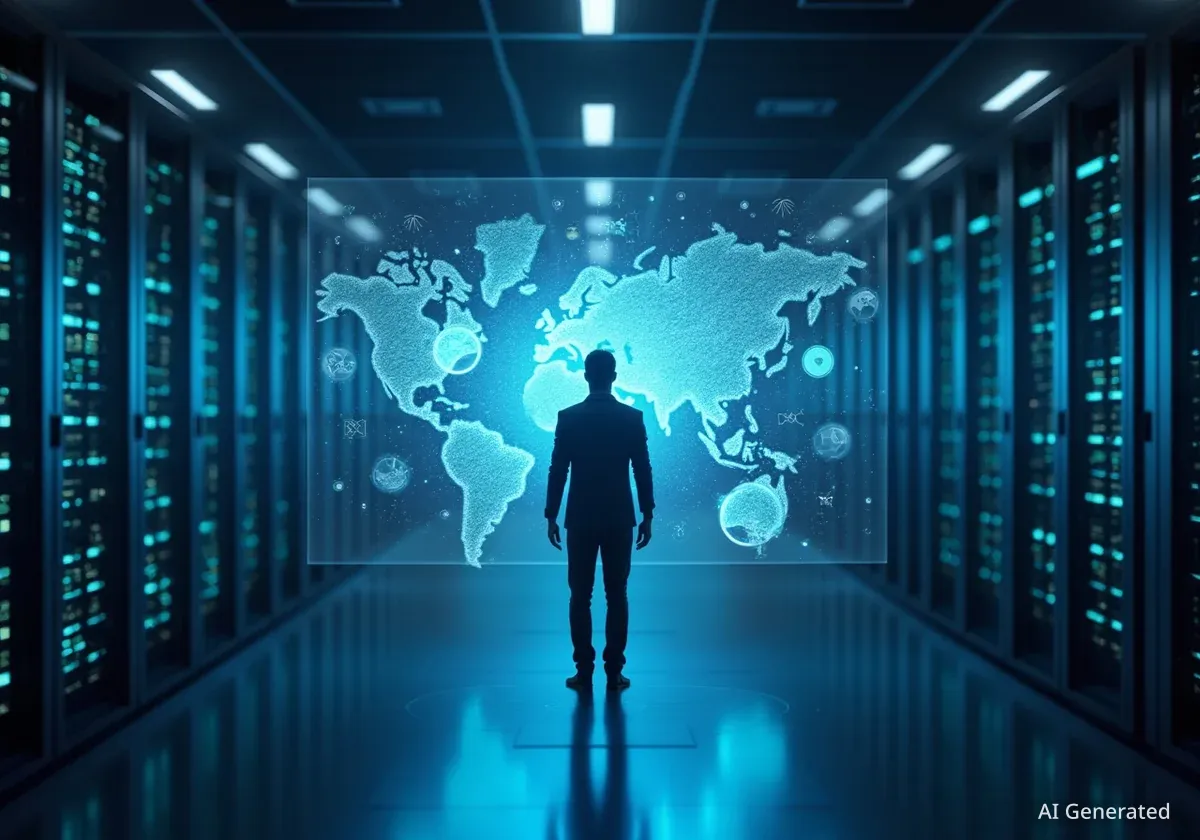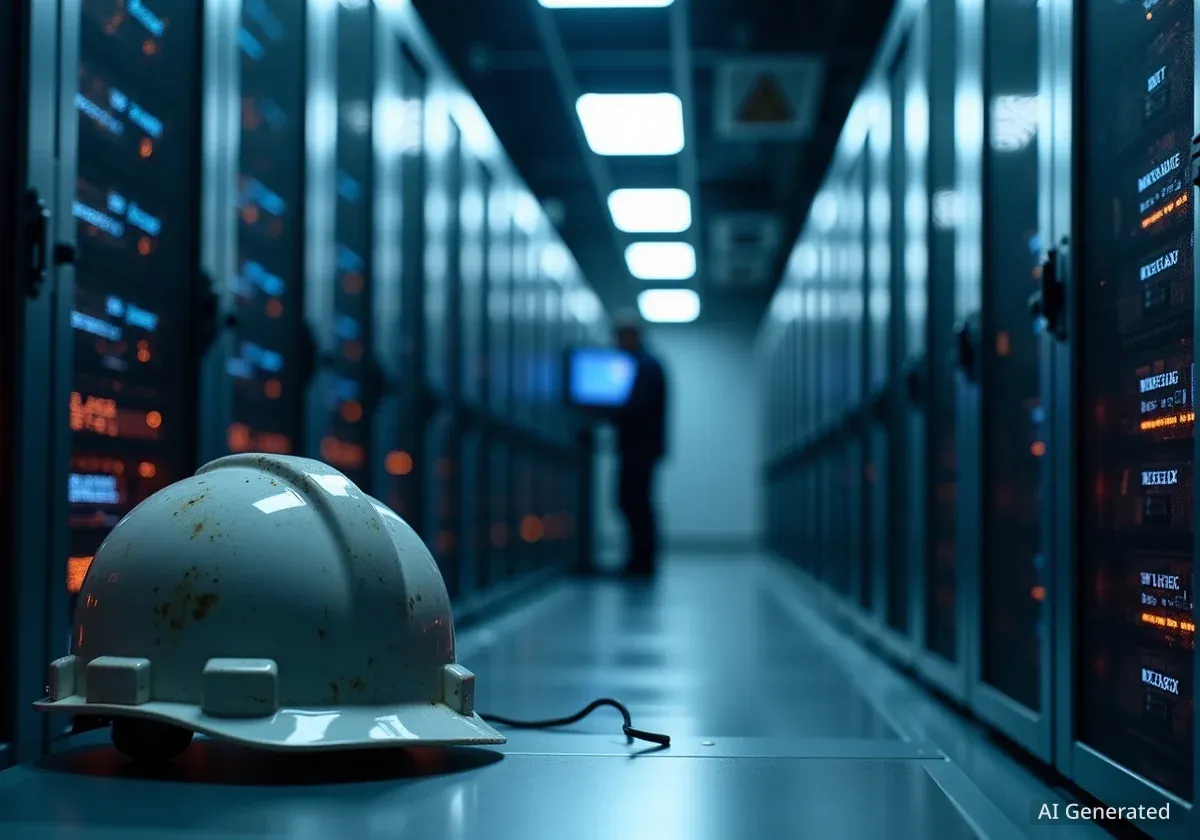A new study from Northeastern University indicates that artificial intelligence is fundamentally changing the nature of work by altering required job skills, a more complex process than simply eliminating positions. This research challenges earlier, more severe predictions about AI-driven unemployment and proposes a new method for evaluating a worker's vulnerability based on their specific skill set.
Key Takeaways
- Research shows AI's main effect on the labor market is redefining job tasks and skills, not mass job elimination.
- Historical models predicting catastrophic job losses due to AI have not been accurate, according to a recent analysis of unemployment data.
- A new metric called "unemployment risk" is being developed to measure the proportion of a worker's skills that can be automated.
- This new approach emphasizes adaptation and retraining, suggesting that a high risk score does not automatically mean job loss.
Rethinking AI's Influence on the Workforce
Concerns about artificial intelligence leading to widespread job loss are common, but recent findings suggest this view is incomplete. The true impact of AI is more nuanced, focusing on the transformation of existing roles rather than their outright removal. According to Esteban Moro, a professor at Northeastern University, traditional unemployment statistics fail to capture the full story.
"We need to understand that the impact of AI on the job market is not just at the end of a job when you get displaced," Moro explained. He points out that AI can redefine job tasks, lead to internal role changes, or allow employees to accomplish more in less time.
This perspective shifts the focus from job titles to the individual skills that constitute a job. Moro argues that current data collection methods are missing these critical, skill-level changes that are occurring across all industries.
The Problem with Current Data
Most government labor statistics track employment and unemployment at the job or sector level. This high-level view does not provide insight into how the day-to-day tasks and required skills within a specific job, like an accountant or a graphic designer, are changing due to new AI tools.
Examining Past Predictions
Many early analyses of AI's potential impact on labor were dire. Some models predicted that automation could put nearly 40% of certain jobs at risk, with some estimates suggesting up to 50% of all U.S. jobs could be affected. However, a new study co-authored by Moro and published in the journal PNAS Nexus challenges these conclusions.
The research team evaluated these historical models by comparing their predictions against actual unemployment data across different states and economic sectors over time. The results showed a significant discrepancy.
"What we found in this paper is that none of those doomsday predictions were accurate. They didn’t happen," Moro stated.
This finding suggests that the initial fear of mass technological unemployment may have been based on an oversimplified understanding of how technology integrates into the workplace.
The Case of Radiologists
A clear example of this phenomenon can be found in the medical field. When AI first demonstrated its ability to analyze X-rays with high accuracy, many predicted the obsolescence of radiologists. The reality has been quite different.
"The number of radiologists in this country increased in the last 10 years," Moro noted. He explains that while one specific skill—reading X-rays—was automated, the full job of a radiologist involves a much broader set of skills, including patient consultation, inter-departmental communication, and complex diagnostic reasoning. AI became a tool that enhanced their work, rather than a replacement for it.
A New Metric: Unemployment Risk
To better measure AI's real-world impact, Moro and his colleagues are developing a new concept: unemployment risk. This metric is not a prediction of whether someone will lose their job, but rather a measure of how susceptible their core skills are to automation.
The calculation is based on a simple principle: the more of your professional skills that can be performed by AI, the higher your unemployment risk. This provides a more granular view of workforce vulnerability.
What is Unemployment Risk?
Unemployment risk assesses a job by its component skills. For example, if 30% of a project manager's tasks (like scheduling and data reporting) can be automated, their risk score would reflect this percentage. It quantifies the potential for disruption, not the certainty of displacement.
Moro emphasizes that a high risk score is not a final verdict. "That doesn’t mean you’re going to be displaced," he stressed. "We can adapt, we can pivot and do something else, or companies and universities can train people in new skills." The metric is intended to be a diagnostic tool that helps workers, companies, and educators identify areas where upskilling is most needed.
Building a Data Observatory for Job Skills
To make this new metric practical, a significant amount of data is required. Moro is part of a collaborative effort with researchers from institutions like Carnegie Mellon and MIT to build the Observatory of US Job Disruption.
This project aims to create a comprehensive database of job skills by analyzing a wide range of sources:
- Publicly available resumes
- Corporate job descriptions
- Online job postings
- Professional skill inventories
By aggregating and analyzing this data, the observatory will track how the demand for specific skills is evolving in real time. The ultimate goal is to create a public-facing tool, potentially a website, where an individual could enter their job title, industry, and location to receive a personalized unemployment risk assessment.
"We have to go farther and farther, which means more data, more analysis and more resources," Moro concluded. "The only way to understand and act on what is happening is to measure it properly." This data-first approach aims to replace speculation with actionable insights for navigating the future of work in the age of AI.





